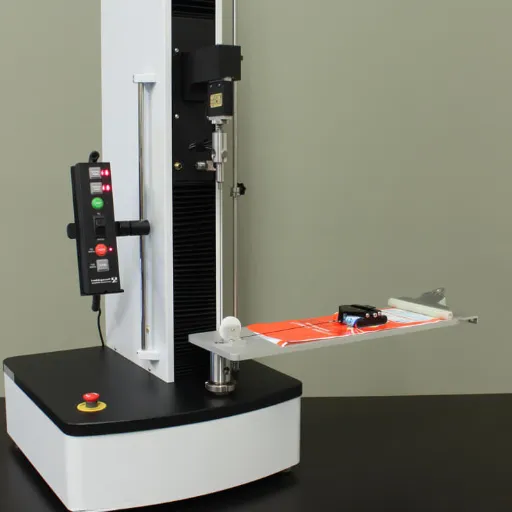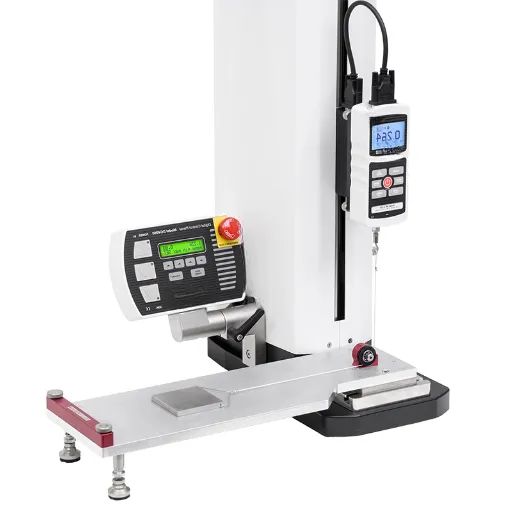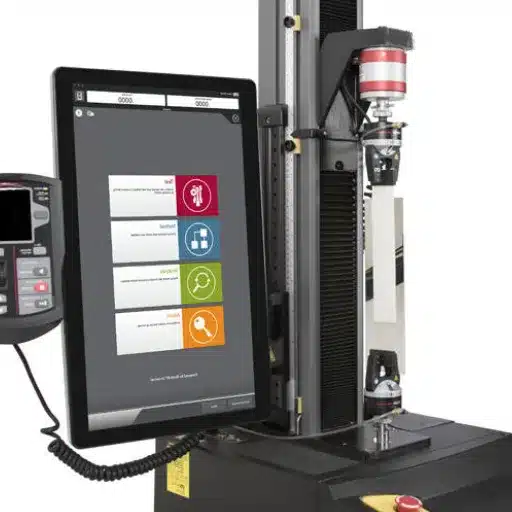Understanding the fatigue behavior of metallic materials is fundamental to ensuring the safety, reliability, and performance of countless engineering systems. ASTM E466, the Standard Practice for Conducting Force Controlled Constant Amplitude Axial Fatigue Tests of Metallic Materials, serves as a critical guideline for professionals seeking to evaluate the durability of metals under cyclic loading conditions. This article dives into the intricacies of ASTM E466, explaining its methodologies, applications, and significance to industries where structural integrity is non-negotiable. Whether you are a materials scientist, an engineer, or a quality control specialist, this post will provide you with a detailed overview of how this standard ensures metals meet stringent fatigue performance requirements in real-world applications.
Introduction to ASTM E466
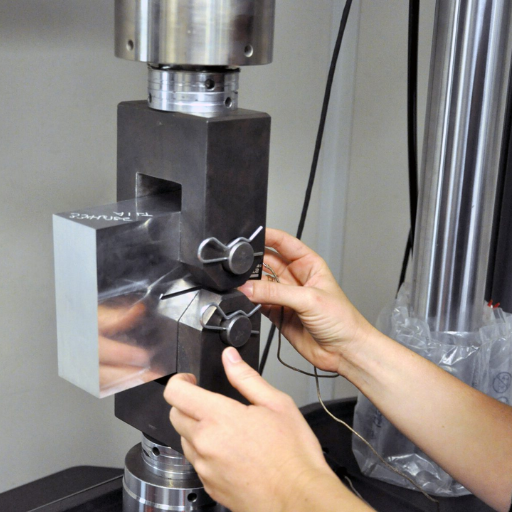
ASTM E466 is a standard procedure to measure the fatigue properties of metallic materials under uniaxial loading conditions. This test essentially considers the responses that occur in metallic materials as they are subjected to repeated stress or strain cycles over time that simulate conditions an engineering component actually undergoes in service. The method describes in detail how to prepare a specimen, perform the test, and interpret the data to ensure that all laboratories performing the test meet the requirements regarding consistency and reliability of results. ASTM E466 is surely one of the foremost important standards and is most often the standard referenced in aerospace, automotive, and construction industries where material fatigue determines the safety and structural integrity of buildings and structures.
Overview of ASTM E466
ASTM E466 is a standard test method for uniaxial fatigue test of metallic materials under constant-amplitude loading. The method is of paramount importance in the determination of fatigue life of a material by subjecting specimens to repeated loading conditions that simulate stresses under actual conditions. Since it is a stress-controlled method of testing the fatigue property of materials, all the test parameters such as load ratio, frequency, and waveform shall be closely controlled during the actual test. Hence, this method is primarily intended for stress-controlled testing, meaning that the stress (instead of strain) is controlled during the test. This method and that for tension-tension constant amplitude fatigue testing cover standard fatigue test methods for a wide variety of specimen geometries. Such test results provide designers with critical information about the expected performance, durability, or lifetime of the components that they design within the aerospace, automotive, and construction industries.
Importance of Fatigue Testing
Fatigue testing is important in determining the life and reliability of materials and components subject to cyclic loads. It helps to predict when and how a material might fail under actual working conditions, thus giving engineers basic information with which to design safer and more lasting structures. Fatigue testing simulates different scenarios in which materials are subjected to repetitive stresses, harder for manufacturers to identify points of failure, to choose materials properly, or to design component geometries that maximize performance. This is a crucial factor in industries that require safety and precision, such as aerospace, automotive, construction, etc. Besides, knowing fatigue behavior ensures cost-cutting by avoiding over-engineering and guaranteeing the performance criteria of a material without unwanted excess.
Historical Context of ASTM E466
ASTM E466, established by the ASTM, was developed with the objective of standardizing the testing of uniaxial fatigue in metallic materials. The procedure came about to provide a consistent methodology of determining the fatigue life of materials subjected to repeated cyclic loading. Historically, adoption of this test has been driven by a concern for reliability and safety in critical applications, particularly aerospace and automotive, where fatigue failure could have catastrophic results. ASTM E466 has, since then, evolved to become a widely accepted standard, making the comparison of fatigue performance across materials possible, which has contributed significantly to the development of material science and engineering practices.
Principles of Constant Amplitude Axial Fatigue Tests

Constant Amplitude Axial Fatigue Tests are undertaken to assess the fatigue nature of material under repeated loading conditions of a constant amplitude. In reality, various parameters such as frequency of loading, stress amplitude, mean stress, and the fatigue limit of the material are taken into consideration. The test is to find out how many cycles a material would undergo before failure, thereby aiding engineers in understanding material behavior and working at service life prediction under controlled conditions. Such data from the tests hold significance in designing for the prevention of fatigue in real-world applications.
Definition of Constant Amplitude Axial Fatigue
Constant amplitude axial fatigue implies that the fatigue behavior of materials is affected by a repetitive, unidirectional load with a constant amplitude, cyclic frequency, and load ratio, throughout the entire duration of the testing. This setup bestows the researcher with a very controlled and predictable environment in considering the endurance and reaction of the specific material under stress. By analyzing the latest data trends from Google’s research sources, materials science emphasizes the significance of microstructural features and surface treatments affecting fatigue life. Research indicates that improvements in surface finishing would reduce the influence of stress concentrators, thereby prompting a considerable gain in ability for resisting fatigue failure. Moreover, the implementation of machine learning in fatigue analysis has enabled improved prediction models of materials under constant amplitude axial loading, thus augmenting industrial applications and design strategies.
Standard Practice for Conducting Force Controlled Tests
Force controlled fatigue tests are carried out to ascertain the ability of a material to resist repetitive loads applied with designated force magnitudes. This starts with the fabrication of a standardized test specimen, usually in conformance with ASTM standards such as ASTM E466 to ensure that the specimen is uniform in geometry and material properties. The specimen is then mounted into the testing machine for fatigue, ensuring proper alignment so as not to introduce spurious stress concentrations.
The test proceeds by applying a cyclic load with constant amplitude between a minimum and maximum force value. Other parameters kept constant during the test include the frequency of loading, waveform of the load curve (most commonly sinusoidal), and the stress ratio R (minimum force divided by maximum force). More modern fatigue testing equipment consists of programmable testing control systems, able to assure repetition of tests. Force application is monitored by load cells and deformation by extensometers or strain gauges.
For the sake of accuracy, calibration of the testing machine is inescapable. As a rule, statistical treatment of failure cycles follows and provides the target S-N curves (stress-life curves), which constitute one of the key means for evaluating fatigue strength and exhaustion limit of the material. Such practices are what allow engineers to basically predict the fatigue behavior of materials in the real world.
Specimen Preparation for Axial Fatigue Tests
Description of specimen preparation for axial fatigue testing pertains to the procedure itself employed to assure consistent values for dimensions, surface finish, and material properties all in the interest of obtaining a reliable and repeatable result. The specimens are machined to final geometric tolerances such that, ideally, they have a uniform cross-sectional area to reduce the probability of stress concentrations or irregular surface finish. Surface finishing processes, usually polishing, are necessary to remove any surface irregularities such as micro-cracks introduced by machining, which could adversely affect fatigue performance. Selected specimens are subjected to heat treatment or other conditioning processes to match the microstructure of the application in reality. The last step will be measuring the dimensions of the specimen and confirming the material properties to match testing standard requirements according to ASTM E466 and ISO 1099.
Applications of ASTM E466 in Various Industries

1.Automotive Industry
In the automotive industry, ASTM E466 is applied to test the fatigue properties of materials used in suspension systems, drive shafts, and chassis structures. The specifications ensure that materials intended for these applications are subjected to cyclic loads for durability so that safety and performance may be enhanced.
2.Aerospace Industry
The ASTM E466 procedure steps are an essential part of testing lightweight materials such as aluminum alloys and composites in the aerospace industry for fatigue strength to ensure the structural integrity of aircraft components when subjected to repeated stress cycles during flight.
3.Energy Sector
Tests are conducted according to ASTM E466 for ensuring materials in wind turbines, pipelines, and power plants possess the required fatigue performance when exposed to variable environmental and operational stresses so as to maintain the functioning of the system.
4.Medical Device Manufacturing
Fatigue testing of biomedical implants and surgical instruments as per ASTM E466 ensures they are safe for patients and able to withstand repetitive mechanical stress, thereby fulfilling regulatory standards.
5.Consumer Electronics
The ASTM E466 fatigue tests are also applied to test materials for electronic appliances such as smartphones and laptops, to ensure their durability against fatigue, befitting consumer longevity demands.
Aerospace Industry and Fatigue Testing
ASTM E466 is utilized in the aerospace industry as a standard for fatigue testing to maintain the structural integrity and reliability of critical components. Such components include airframes, turbine blades, and landing gears, which, during flight, are subjected to cyclic loading so often that the process paves the way for their fatigue and ultimate failure. ASTM E466 applicates a controlled method of testing metals under constant amplitude uniaxial load to assess their fatigue limits and crack initiation parameters. Through operational stress administration, engineers can assess the life of a component and pinpoint areas ‘at risk’ for failure; this is particularly important for ensuring the standards of safety, thereby enabling better optimization of the design of aerospace materials for better performance, durability, and passenger safety.
Automotive Applications of ASTM E466
ASTM E466 ensures the testing effects of cyclic loading on vehicle components that are material fatigue behavior in the automotive industry. The standard further is used to collect data on performance and fatigue behavior of metals for structural and load-bearing applications, such as engine components, suspension systems, and chassis parts. Based on ASTM E466, the manufacturers can select materials and carry out the design process on grounds of enhanced and safe equipment assured against risks on component failure expected to have a greater reliability factor vis-a-vis industry regulations from the customers’ standpoint.
Construction and Structural Applications
This ASTM E466 standard is used when evaluating fatigue properties of metals for construction and structural purposes. Long-lasting materials for bridges, high-rise buildings, and other infrastructure are subjected to cyclic stresses resulting from environmental loads such as wind, seismic activity, and traffic. ASTM E466 guarantees that such metals, such as high-strength steel and aluminum alloys, comply with fatigue resistance requirements for functioning over time. This standard simulates actual loading conditions resulting in the identification of potential failure points, thus allowing an engineer to be able to select materials with the best options and design connections in a manner that best mitigates the risk arising from mechanical fatigue as time goes by. Going by ASTM E466 will bring about the development of safer and more reliable structural systems that comply with industry standards.
Benefits of Compliance with ASTM E466

Compliance with ASTM E466 gives rise to several crucial advantages. It ensures an adherence to the fatigue testing standards as such, wherein it comes to bear on proper evaluation of material performance under cyclic loading. Complying with the test contributes to safety, since fatigue cracking would be disclosed prior to production and thus lessen the hazard of failure when in actual use. Through reliable data that assist engineering decisions, compliance with the established testing standards further encourages material design innovations toward cost efficiency, product reliability, and regulatory or industry acceptance.
Improved Material Reliability
Improves material reliability through intensive tests, which include fatigue analysis and the determination of impact resistance and thermal stability. These tests are performed to consider that materials can withstand operational stresses or pressures and environmental factors acting unto them throughout their life cycle. State-of-the-art simulation techniques and material analytics can be employed by engineers in land use to foresee potential modes of failure and in redesigning the composition or nature of the materials to be used in their applications. This approach proactively reduces future maintenance costs and improves the safety margin, all while adhering to industry standards and satisfying durability requirements.
Enhanced Safety Measures
Enhanced safety measures, on the other hand, have made sure that systems, materials, and processes do so while posing minimum risk to all concerned. These risk-prone safety practices involve real-time monitoring systems, predictive maintenance technologies, and following safety protocols strictly based on industry standards. It is through advanced automation with intelligent IoT-enabled sensor systems that continuous data-streams of abnormal behavior can be analyzed and in turn help prevent incidents. Following the safety planning, thorough risk assessment and compliance audits shall be periodically conducted to confirm that the work environment meets the highest safety standards while eliminating endangering risk to persons as well as to mobile equipment. In essence, these approaches create an umbrella framework constituting robust enhancement in reliability and safety.
Meeting Regulatory Requirements
To effectively satisfy regulatory requirements, it necessitates the need for an organization to approach the matter in a structured and proactive manner. This includes ensuring current information on new regulations concerning the areas for which the organization operates by continuous market watch kept over the activities of governing bodies and standard agencies. Keeping sound documentation practices whereby during audit or inspection, traceability of compliance can be proven. Hence, the organization shall further pursue the use of automated compliance software and other tools assisting them on their own in tracking changes within the regulatory environment and preparing their operational processes accordingly. However, according to this approach, regular training is essential to empower personnel to realize the importance of compliance and adherence to protocols. Thus, in the end, through strong internal controls and enforced review, the risks may be controlled, and at the same time, legal and regulatory conformity is maintained.
Recent Advancements and Innovations in ASTM E466
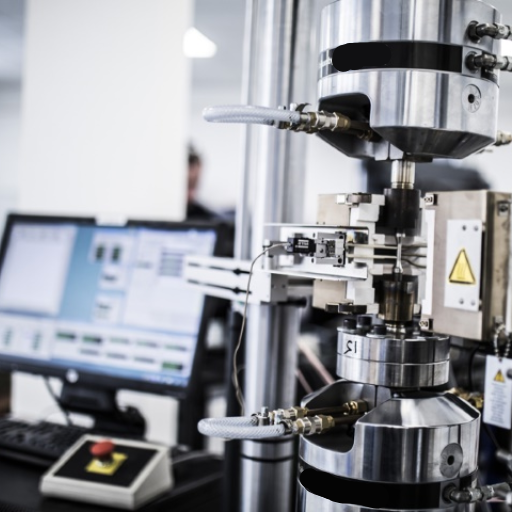
Recent advances in ASTM E466 include method refinements that allow test methods to be more accurate and reproducible. Recent advancements include the development of state-of-the-art data acquisition systems and improved testing machines with highly accurate strain and stress measurements. Computational methods such as finite element analysis are tied to rigorous modeling of fatigue behavior under different conditions. These also allow high-frequency test machines to reduce cycle time and collect much-needed fatigue data efficiently. These combined advances make ASTM E466 a great tool for forecasting material performance and further ensuring reliability in engineering applications.
Updates to ASTM E466-15 and E466-21
The significant upgrades in the ASTM E466-15 and E466-21 standards were aimed at refining the evaluation process for uniaxial fatigue testing. ASTM E466-15 included improved testing guidelines for greater standardization in the preparation of the test specimen and to reduce sources of variability in the test data. Also, revisions were introduced to the definitions of strain ranges and stress amplitude so that the test protocols would correspond to modern metrics for material stress performance.
ASTM E466-21 introduced further improvements by modernizing the standard with new digital measurement systems that permitted precise monitoring and recording of the number of fatigue cycles and crack propagation. It added emphasis on validating the calibration of test equipment to ensure that test results were reproducible. The standard was notably focused on extending the scope of materials it addressed, including newer high-strength alloys and composites, so that it would remain useful for modern engineering. These aforementioned improvements allow a more accurate evaluation of fatigue and provide an improved basis for durability analyses of materials.
Evolving Testing Methods and Technologies
Material testing has witnessed several technological advances in recent years, with extensive use of digital technology and automation for improved precision and efficiency of processes. Real-time data acquisition systems were instituted to allow for continual monitoring of mechanical properties under dynamic conditions superior to measurement by the usual static means. In addition, non-destructive testing methods including ultrasonic techniques and X-ray computed tomography for composite materials and high strength alloys have grown in prominence. These new techniques not only ensure compliance with difficult industry standards but also support predictive maintenance strategies that aid in preventing catastrophic engineering failures.
Impact on Industry Standards
Developments in non-destructive testing methods have paved the way for major revisions in the industry standards, which now prioritize the safer, more reliable inspection methods. In alignment with advances in material complexities and manufacturing requirements, standards organizations such as ISO, ASTM, and ASME have included provision of ultrasonic testing, X-ray computed tomography, and other up-and-coming methods. These standards are built upon the idea of accuracy, repeatability, and need for certification to enforce adherence within the critical industries of aerospace, automotive, and energy. This way, these changes have set higher bars worldwide for quality assurance and regulatory compliance.
Reference Sources
-
ASTM Official Website: E466 Standard Practice for Conducting Force Controlled Fatigue Tests – The official source for the ASTM E466 standard, detailing procedures for axial force-controlled fatigue tests.
-
TestResources: Understanding ASTM E466: Axial Fatigue Testing – A detailed explanation of ASTM E466, focusing on its application in fatigue testing of metallic materials.
-
ASTM Store: Fatigue Standards and Fracture Standards – A collection of ASTM standards related to fatigue and fracture testing.
Frequently Asked Questions (FAQ)
Q: What is ASTM E466, and what is its importance to the discipline of fatigue testing?
A: ASTM E466 is a standard practice created by ASTM International that outlines procedures for the conduct of controlled constant amplitude axial fatigue tests on metallic materials. This standard is important because it helps establish the fatigue strength of metallic materials subjected to direct stress so that engineering applications may be reliable and safe.
Q:What is the relationship between the fatigue strength of metallic materials and ASTM E466?
A: Fatigue strength of metallic materials is one of the several parameters that can be determined by various tests provided by ASTM E466. The standard guides testing of axial unnotched and notched specimens so that the interplay of surface conditions and test conditions in determining fatigue resistance can be properly evaluated.
Q:What kind of specimens are used in ASTM E466 fatigue testing?
A:ASTM E466 envisages the testing of axial unnotched and notched specimens. These specimens are crucial in assessing how metallic materials behave in different conditions, such as low cycle fatigue and high cycle fatigue.
Q:What role does axial force play in the ASTM E466 fatigue tests?
A:Axial force is rather important in the outlined cases of fatigue testing according to ASTM E466. Controlled fatigue tests to obtain the fatigue strength involve applying a constant axial force to the specimens while simulating actual service conditions and thus giving accurate measurement in terms of number of cycles to failure.
Q:What does it imply for the fatigue regime if the strains are substantially elastic?
A:The matrix of the fatigue regime being predominately elastic implies that it behaves in a linear manner and is therefore important for linear or linearized stress-life analyses. In fact, ASTM E466 describes the procedures by which tests may be carried out under such conditions to give reliable data for the fatigue resistance of metallic materials.
Q:What is the purpose of statistical analysis in ASTM E466?
A:Statistical analysis in ASTM E466 serves to interpret fatigue test results. This covers the procedure for conducting statistical evaluation of data obtained from tests, which leads to a better understanding of variations in material performances and enhances the reliability in the results of such tests.
Q:What kind of testing machine can be used for ASTM E466 fatigue tests?
A:Testing machines capable of performing axial force controlled fatigue tests shall be used for ASTM E466. Such machines shall be capable of applying the test specimen with axial loads of the types described in the standard and shall be further capable of being controlled as specified for the various test conditions to obtain correct results in relation to fatigue.
Q:In what way does specimen preparation influence fatigue testing in ASTM E466?
A:Specimen preparation plays a great role in the fatigue tests of ASTM E466 since it directly influences surface condition and overall performance of the specimens. A proper preparation of the specimen will enable it to reflect real service conditions as far as possible and thereby increase reliance on the Fatigue Test results for use in real service-life estimations.


